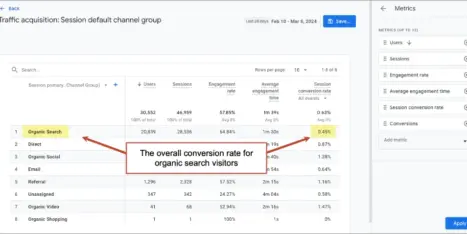In case you didn’t know, Google isn’t great at indexing the content in Javascript and Flash files.
While it’s true that Google now indexes this content (yes, even Javascript and CSS), you can’t count on it to understand it as well as static HTML content.
Some SEOs advise using the noscript tag, an HTML tag that displays alternative content to users who don’t have javascript enabled. Is this good advice?
The answer is, as you’ll hear from me frequently, yes and no.
Noscript tags can be very helpful for your SEO in many circumstances. Unfortunately, when they are used incorrectly, they can also be downright devastating.
Read on to find out how noscript tags influence SEO, how to implement them properly, and how they can do tremendous damage if used incorrectly.
Does Google index the content inside noscript tags?
There seems to be a lot of controversy surrounding this topic and there really shouldn’t be. We’ve received a very clear answer directly from a Google employee.
Back in 2007 (yeah, I know) CNET interviewed Maile Ohye, a Senior Support Engineer on the Google Webmaster Team. Here is how CNET paraphrased what she said:
Maile confirmed that Google looks at the content within “noscript” tags, but be careful to mirror accurately the Flash-based content you include within the noscript tags or it will look like cloaking to Googlebot.
Now that Google can index Flash, Javascript, and CSS directly, I would be especially concerned about the content within noscript tags looking as though it were an attempt at cloaking.
So it’s true then. Google indexes noscript content. So if you’re using Javascript or anything similar, you should always place alternate content in noscript tags to make sure the content gets indexed, right?
Not necessarily.
In fact, it can lead to disastrous results when used incorrectly.
How noscript can hurt your SEO
Okay. So I already mentioned that you should be careful not to make it look like you’re cloaking. So, you know, make sure your noscript alternates are accurate.
However, there’s more to it than that. Consider this webmaster’s dilemma:
If I have a <noscript> tag on every page of my website with the same sentence over and over saying something to the effect of “Sorry our site uses Javascript, please enable javascript for the full site experience.”, Webmaster Tools will tell me that one of the most common words on my site is “Javascript”.
Is this something to be concerned about from an SEO perspective? My site is obviously not about Javascript and I don’t want to dilute my page’s topic or authority by repeating words that are not relevant to the topic of my site.
This isn’t the only discussion online where similar things have happened. In some circumstances, Google will display your noscript content in search snippets or even in place of a meta description. This can hurt click through rates, which can inevitably hurt search engine rankings. And, of course, if Google thinks that all of the pages on your site say the same thing because they have identical noscript tags, Google may only display one of those pages in the search results, refusing to display the rest of them in the main index.
So, here are some things to keep in mind:
- Avoid posting identical noscript content across all or many of your pages.
- If you feel that an identical message is important for users, post your message as an image inside of a noscript tag, or simply as a static image underneath a javascript element, instead of as plain text. This way, Google will not index the text.
- Use unique noscript content on each page if at all possible.
- Make sure that the noscript content accurately reflects the content in the script.
- As an alternative to noscript, it is ideal to host a static HTML page with a script running on top of it, and pulling its content from the static page.
- Ideally, every page should use at least some unique, static HTML content. A title tag and h1 tag are especially important, but some degree of paragraph text would also be ideal if it can be made useful for visitors.
Oh, and if you were wondering how noscript works in HTML, it looks like this:
<script>
document.write(“Hello World!”)
</script>
<noscript>Your browser does not support JavaScript!</noscript>



